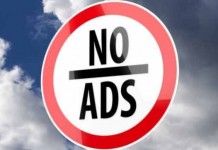 Cory Doctorow has an interesting column in the Guardian looking at what little can be determined from the few sales figures that Rupert Murdoch’s paywalled London Times/Sunday Times representative has deigned to release. The paper has said that the Times had “200,000 paid users, 100,000 of whom were digital-only customers”. Doctorow reads between the lines as best he can and comes up with some interesting suppositions.
Cory Doctorow has an interesting column in the Guardian looking at what little can be determined from the few sales figures that Rupert Murdoch’s paywalled London Times/Sunday Times representative has deigned to release. The paper has said that the Times had “200,000 paid users, 100,000 of whom were digital-only customers”. Doctorow reads between the lines as best he can and comes up with some interesting suppositions.
Doctorow writes:
Fundamentally, the question News Corp is trying to answer is: "Will the Times make more money with a paywall?" And the figures we’ve just seen do nothing to answer this question. Rather, the Times seems to think that the new figures prove something else: "People are willing to pay for their news." I don’t think that anyone has ever disputed that someone, somewhere, was willing to pay for the Times, though: surely the important question, from a business perspective, is, "Will adding a paywall increase your profits?"
Part of the problem is that the Times does not break down its digital-only subscriber figures to say how many of those subscribers are actually buying full subscriptions, and how many are only buying individual articles or trial months. About the only other figure the official spokesperson gave was that there were 50,000 current monthly subscribers, and that if someone had subscribed for 3 months already, they were 90% likely to subscribe for a 4th.
Doctorow comes up with a best-case and worst-case scenario for the number of subscribers based on what he was told.
I don’t know which one is closer to the truth, because the Times isn’t saying. But I do know that when there was a positive number – more than 90% renewal at the third month – the figure was readily available, which leaves the distinct impression that all the undisclosed numbers are less than stellar.
He also points out that site traffic to the Times’s web site has fallen off by about 99%, from 20,000,000 hits a month to 200,000. The Times thinks it can overcome this reduction in traffic with higher advertising rates, but it remains to be seen just how valuable these paying users are going to be to advertisers who tend to measure success in terms of total number of eyeballs. And The Times also isn’t saying just what those higher rates actually are, save to the advertisers themselves.
Overall, Doctorow is skeptical about how good the Times’s sales can really be, especially as reticent as they are being with their overall sales figures. (They even opted out of national, industry-standard circulation audits.) As for how good or bad the real figures are, Doctorow notes, “Only the Times knows, and they’re not saying.”

































Is there a link to the referenced article available?
Geez, how did I manage to do that twice in one day?
I’ll fix it when I get home tonight.